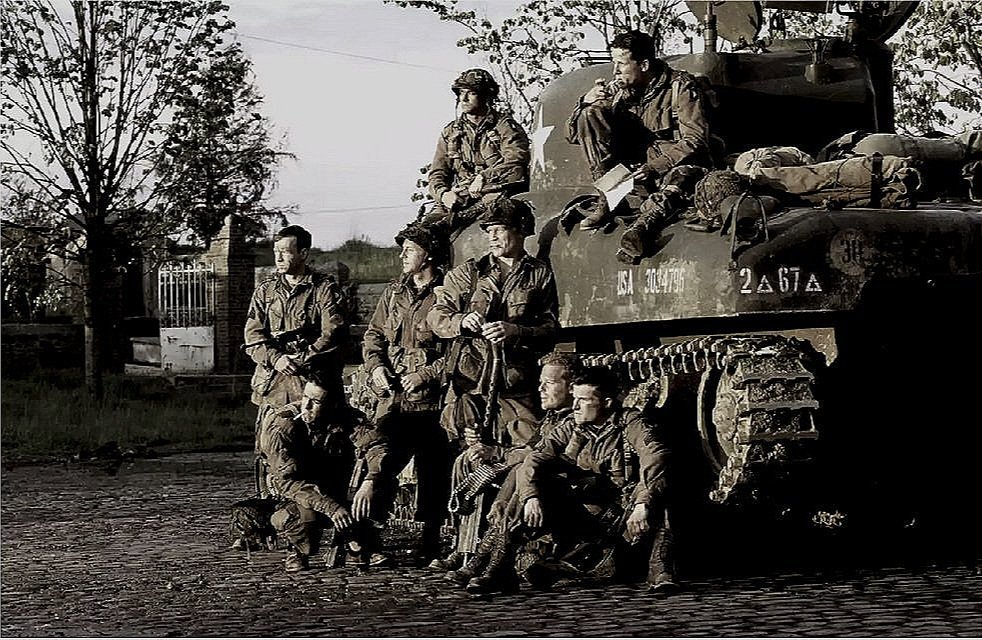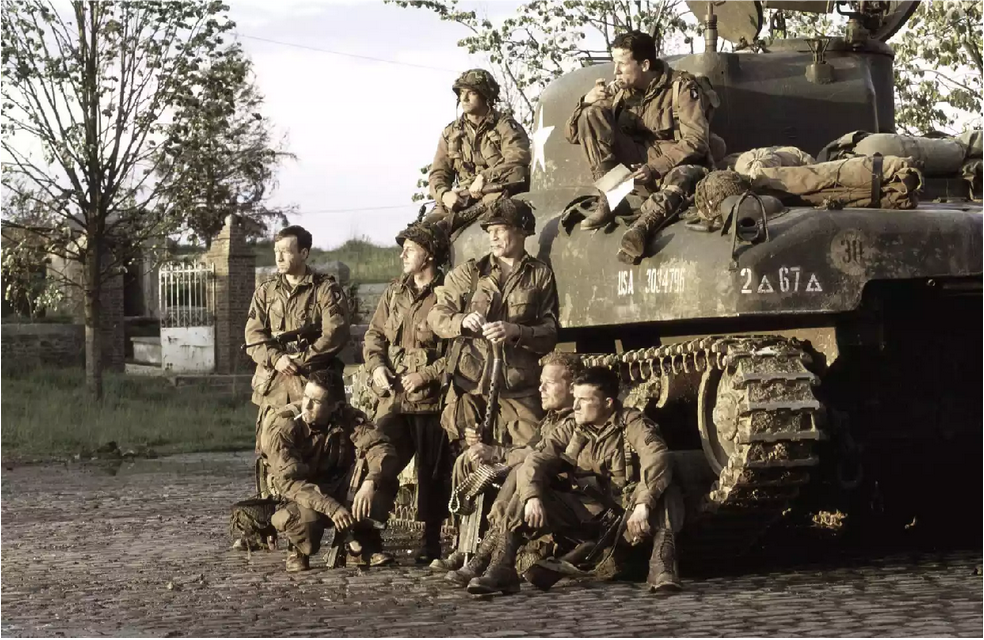
War Heroes, Race, and the Battle Lines of American Civil Religion
March 2025
By: Cole Picca and Andrew Monteith
Cole Picca graduated from Elon University in 2024 with an American Studies major and minors in Religious Studies and Political Science.
Andrew Monteith is Associate Professor of Religious Studies at Elon University and author of Christian Nationalism and the Birth of the War on Drugs.
It’s no secret that we are living through a period of upheaval. Regardless of whether one loves or hates Donald Trump, most of us can agree that he has been effective at disrupting status quos, including those around race. Especially during the past few years, conservative US Americans have voiced opposition to diversity, equity, and inclusion (DEI) initiatives, criticizing them as “un-American,” often suggesting that DEI means lower standards. While Project 2025 targets DEI in all its arenas (education, medicine, labor practice, etc.), one of the primary sites where it and other conservatives have challenged DEI is the military. When the House of Representatives voted in 2023 to abolish DEI from the military, Arizona Congressman Eli Crane explained that “the military was never intended to be inclusive,” then added that “colored people” would still be welcome to serve. In 2025 the anti-DEI campaign has finally gained favor in the executive branch, with Trump working diligently to purge it from all areas of federal government, including the military.
It was obvious to government officials that the White House wanted them to scrub DEI from the picture, yet many of the specific expectations remained unclear. As service branches purged their websites, media, and policies of references to race, gender, and sexuality, one comparatively minor erasure made international news: a US Air Force base in San Antonio paused showing films of the Tuskegee Airmen and female WWII pilots to new recruits. Although the Air Force reversed course soon after, the symbolism continues to echo. Soldiers figure large in US iconography. People pay their respects to the Unknown Soldier in Arlington, VA, they make pilgrimages to Normandy, they honor US veterans as a moral duty. But women and African-American veterans are two groups who do not always receive the same kind of veneration. If a single Air Force base suddenly found its training program under public scrutiny, it is because critics saw pulling those videos as disrespectful to some veterans’ service. What we’re seeing in this is a fight over the content of American Civil Religion (ACR). Although Robert Bellah set the starting terms for discussions of ACR, we ourselves sit closer to contemporary scholars who treat it as the umbrella term for varieties of religion that focus on Americanness—varieties that often essentialize national identity in the process. Race is so central to American identity that disputes about ACR frequently invoke it. Anti-DEI is just the newest contestant in a battle for American orthodoxy.
Female pilots debarking at Lockbourne Air Force base near Columbus, Ohio, 1944
Our collective relationship to history is part of what’s at stake. In his now classic work Silencing the Past, Michel-Rolph Trouillot writes “each historical narrative renews a claim to truth” (6). We could say this another way: history (at least as we understand that word in our own culture) is a story about something that’s really happened. History books are shelved as non-fiction. Yet just as a map is not the territory, historical narrative is never the event itself, it is a story we tell about things we consider important. These narratives take many forms—they can be wordless statues, AM radio commentaries, museum exhibits, or commercial entertainment.
Filmmakers sometimes choose to participate in history in their own way, narrating it through artistic media while attempting to preserve any essential elements of truth. Creators committed to historical accuracy hope to tell things as they really were. At the same time depicting some moments of history the way they truly happened might not always be profitable nor help with creators’ larger goals. Although some people raised hell over how USAF handled the anti-DEI directive, it was hardly worse than the much larger omissions that our culture has been complacent about for years. Although we have countless films and semi-fictional television shows about WWII, many of them sideline women and racial minorities. When studios try to engage these subjects people tend not to show up in the same way. When MGM made a movie about the Navajo Codetalkers in 2002, it lost $37 million and got a 33% on Rotten Tomatoes. In contrast, Touchstone’s 2001 movie Pearl Harbor earned a 24% on Rotten Tomatoes while still making a $309 million profit. While there were probably other factors involved in that besides race, we invite readers to name for themselves a successful WWII movie that centers either women or racial minorities.
“Historical memory” captures a range of concepts. In its broadest sense, it’s the way living people remember historical moments, which can sometimes be quite different from what historical evidence supports. It can preserve positive moments as well as trauma; it is also relevant for thinking about histories that people collectively forget. For both individuals and groups memory can be fragile; it is easy to lose track of details that don’t strike us as significant. In her work on historical memory and Pearl Harbor, historian Emily Rosenberg discusses media as central to US memory, arguing that they enhance or perhaps even implant certain memories, but she also observes that “forgetting is the condition of media death.”
War films are part of historical memory since they both shape how audiences perceive the past and since they are themselves extensions of creators’ own perceptions of history. Films that we regard as “historically accurate” may be an accurate representation of the way society remembers battles and wars, but each one is always still a retrospective interpretation rather than a pure truth. Even “historically accurate” films are shaped by both profit and creative license; these depictions may leave out particular people or details that don’t fit what creators’ have in mind. But there’s more at stake here: many war films—especially those about WWII—are devotional texts for ACR. Like many religions ACR utilizes symbols, myths, community identities, moralities, and so on. Yet one of its most important qualities is that it is experiential. Those invested in ACR feel an emotional connection to the United States. So what happens to that religious connection when war films commit themselves to the historical accuracy of an era when the military was still segregated?
Jon Ebel’s book G.I. Messiahs makes a compelling case for understanding soldiers as a central site of ACR. Soldiers are “the word of the nation made flesh,” and while there may be specific, real soldiers who live the lives we see every day in Instagram clips or TikToks, there also remains the singular “American soldier” who lives as myth. Individual soldiers have real lives, but the symbolic American Soldier signifies a particular set of values. Toby Keith’s “American Soldier” serves as a representative example of this; neither the song nor the music video represent a real flesh-and-blood soldier, but instead depict soldiers from multiple historical wars as they sacrifice for the nation. If soldiers represent the sacred core of the United States (or sacred corps if we want to go with Ebel’s emphasis on embodiment) then stories about them are essentially stories about what makes America American.
While “historical accuracy” operates as a common goal for many filmmakers, they also deviate from this when the truth might be too different from the myth. As John Lyden points out in Film as Religion, the historical Chris Kyle was anti-Muslim and anti-Iraqi. In his own words Kyle wrote, “I never once fought for the Iraqis. I could give a flying fuck about them.” Yet Clint Eastwood’s gritty retelling of his service in American Sniper shows a different Kyle, a man who weighs Iraqis’ dignity carefully and hesitates to kill unless he must. Eastwood, who is himself a Korean War veteran, had particular ideological aims with the film. He wanted to honor soldiers’ service. Had American Sniper portrayed Kyle’s attitudes toward Muslims and Iraqis in its fullness we would have seen a very different story, one that might have unsettled Eastwood’s goal of honoring Kyle’s character and martyrdom. also taking an anti-war position. Had American Sniper portrayed Kyle’s attitudes toward Muslims and Iraqis in its fullness, we would have seen a very different story, one that might have unsettled Eastwood’s goal of honoring Kyle’s character and martyrdom.
When it comes to representing US G.I.s in World War II films, soldiers are cast as inherently good and locked in a fight to conquer evil. Of course it is not just films that idealize soldiers as exemplars. Tom Brokaw dubbed WWII soldiers as “the Greatest Generation” and museum exhibits routinely show smiling, strong, (mostly white) men who sacrificed the most of any era out of patriotic love of country. These depictions date back to WWII itself. And in these depictions of “the Good War” we rarely find the actual horrors or detritus of life on the front—we do not access the smells, the fears, we do not encounter despair or emotional breakdowns. The WWII soldier in films is stalwart and unflappable. He knows his duty supersedes his personal needs, and the conventions of masculinity don’t allow for doubt or tears.
But if Ebel is right in describing the soldier as “the word of the nation made flesh”—the personification of meritorious American virtues—then historical accuracy as it is currently practiced may have an insidious quality to it. Our beef here is not with actual flesh-and-blood soldiers. (Both of us, Picca and Monteith, come to this question from different starting points, yet we both land on a posture of respect when it comes to military service.) Instead, the challenge we’re making is that filmmakers’ preoccupation with Normandy and Iwo Jima effectively casts The American Soldier as exclusively white.
HBO’s Band of Brothers is an important devotional text in the ACR canon. Created by Tom Hanks and Steven Spielberg, Band of Brothers follows the men of Easy Company from the 101st Airborne from boot camp to the war’s conclusion. (Spielberg and Hanks’s other combined ACR work—acting, directing, or producing—include Saving Private Ryan, The Pacific, Bridge of Spies, Apollo 13, From Earth to the Moon, Charlie Wilson’s War, Beyond All Boundaries, Parkland, Ithaca, Greyhound, Lincoln, The Post, Semper Fi, Flags of Our Fathers, Letters from Iwo Jima, and, should you want to count them, Spielberg also produced An American Tail: Feivel Goes West and Raiders of the Lost Ark. We’re just saying they’ve taken a genuine interest in ACR.) Band of Brothers is overall a well-made series: it’s well-shot, well-scripted, well-acted, and at times heart-wrenchingly gritty. Hanks and Spielberg intended the program to be generative for Americans’ understanding of military sacrifice. By coincidence, Band of Brothers premiered on September 9, 2001 just two days before 9/11.
Obviously there were already narratives and images of the WWII veteran in play; Band of Brothers hardly invented the G.I. Messiah. Even so its collision with The War on Terror—an important crisis moment for ACR—made it more potent. Reflecting on this twenty years later, Hanks himself characterized WWII and 9/11 as echoes of the same human propensity for evil:
“America was again facing a long, unknowable struggle against an enemy that has been, unquestioningly, working for the dark side of humanity. The Nazis and the Japanese empire fought for dark reasons – of race, theology, of a domination of a status quo based on divisions by caste.”
While Hanks’s universalism is poetic, as scholars we may want to draw our own lines with greater specificity. The United States was at war with al-Qaida and the Taliban, but they are no more identical to Nazis than the Nazis were identical to the KGB. However well-intentioned and likeable Hanks may be, his narration was a conflation. Yet Mark Twain once advised us to never let the truth get in the way of a good story.
Robert Madison, one of many African American
soldiers who served in the Italian campaign
And certainly Band of Brothers is a good story, one that went to significant lengths to get the historical facts right. It was inspired by historian Stephen Ambrose’s nonfiction book by the same name. Creators also interviewed surviving members of Easy Company to get their version of what happened, forming what they called “the bible” of Band of Brothers. This emphasis on historical accuracy offers Band of Brothers grounds to present itself not as ideology or a dualistic morality tale about sacrifice in the face of evil, but rather as value-neutral history: it’s an artistic reflection of the truth. Millions tuned in for the award-winning show during its original 2001 run on HBO, rivaling Sex in the City’s viewership. It came at a time when many Americans were also hungry to become “the Next Great Generation” and analogies between WWII and the War on Terror abounded.
Band of Brothers has also retained cultural cache. In 2022 the World War II Museum in New Orleans even celebrated Band of Brothers’s twentieth anniversary by hosting a symposium for it, explaining that “no single work, in the past two decades, has had such an impact, or made such an imprint on the American memory of World War II.” It’s a plausible claim. Yet in its mythologization of the American Soldier, Band of Brothers does not include people of color; its representation of diversity comes from Quakers, Cajuns, and Jews working side by side. US Black military units, or the 442nd Infantry who fought their way from Italy into Germany and were mostly Japanese-American, have been buried under the historical memory of how white soldiers fought. Take these images, for instance: as the violence and suffering brings the men of Easy Company closer together, no attention paid to Black and brown soldiers may cast them farther and farther outside of what it means to be a true US Soldier in World War II.
Band of Brothers is not alone when it comes to the representation challenges posed by commitments to historical accuracy. World War II was a time of segregation and Tom Hanks can’t wave a magic wand that changes that. What exacerbates this, however, is that the entire WWII corpus is overwhelmingly white and programs like HBO’s The Tuskegee Airmen remain outliers. People of color have served in every US war but rarely serve as protagonists in Hollywood’s depictions of those wars. Historical accuracy can explain this omission in Band of Brothers but not that of the entire WWII canon.
It may be because war films—and especially World War II war films—are ACR devotional texts and we live in a society where whiteness has held hegemonic influence. While many US Americans have practiced multicultural forms of ACR, historically speaking, white supremacy has had some long claws and many of our cherished stories have come down from those times. Toby Keith’s music video may have omitted people of color merely through carelessness but as an “End Wokeness” tweet from December 2022 shows, some people actively question how diverse the military could really be. The Army’s demographic data from 2022 show that only 53.6% of personnel are white. “End Wokeness” isn’t necessarily a good-faith tweeter, but there were plenty of others who accepted the narrative that this was just political posturing. Should we be surprised by that when our historical narratives spotlight whiteness so repeatedly?
Rosenberg said forgetting was the condition of media death, but might media death also be the condition for forgetting? If Hollywood creators and consumers want to break away from segregationist ACR then it’s time to think seriously about how to recognize the wartime contributions of people of color. Additionally, those of us who feel that race shouldn’t matter for who does or doesn’t get to count as American ought to be mindful of our own impressions and interactions with ACR. Recognizing and acknowledging that people of color, women, and other minorities have contributed to iconic moments in the US isn’t “special treatment” as some critics would have it. It’s actually just the bare minimum.





